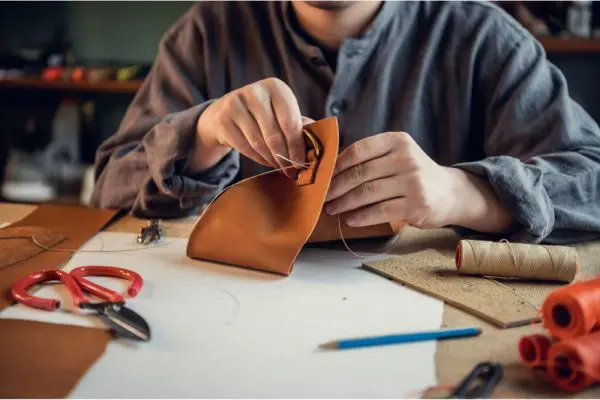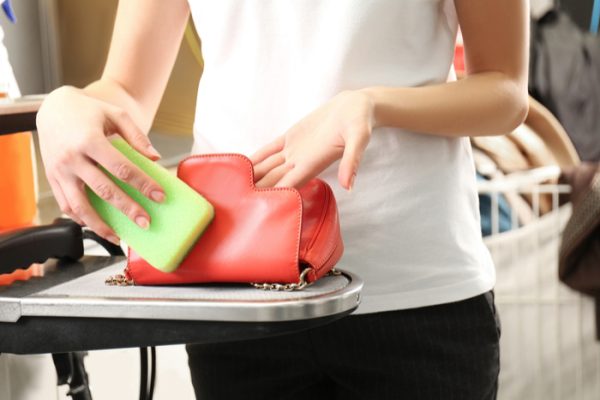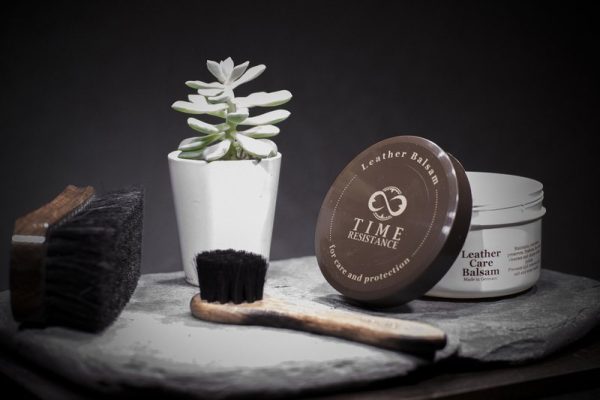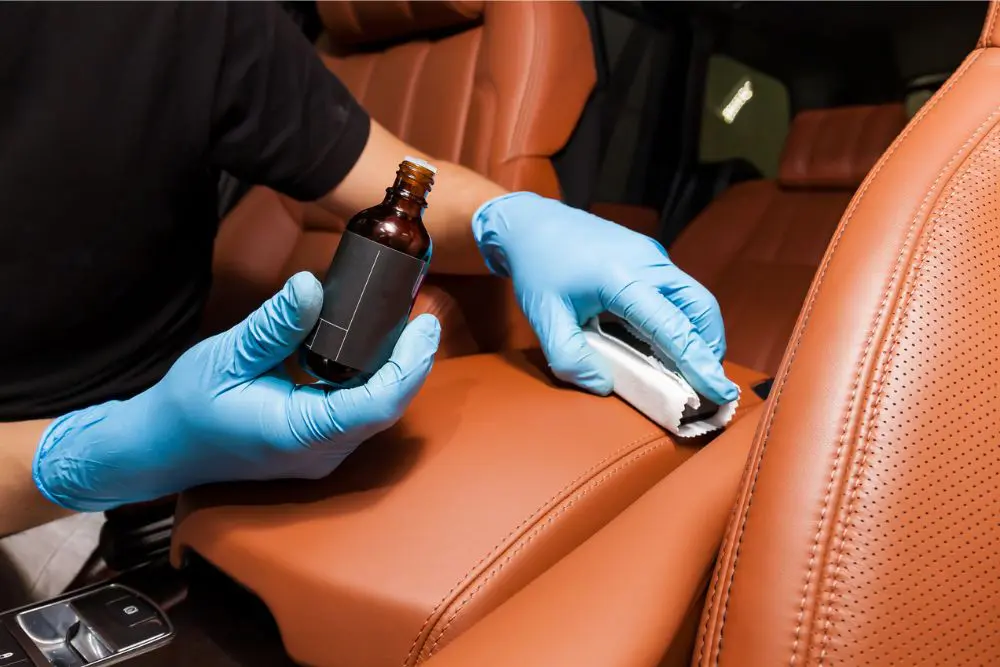All About Leather
How To Get Blood Out Of Leather
Have you ever found yourself in a situation where, accidentally, a bit of blood ends up on your favorite leather jacket, couch, or shoes? It’s a moment that can cause a bit of panic, especially considering how much we treasure our leather goods. But don’t worry! In this article, we’re going to walk you through the steps to get those stubborn blood stains out of leather without causing any damage. It’s all about acting swiftly and using the right methods. By the end of this guide, you’ll be equipped with the knowledge to tackle these stains confidently, ensuring your leather items continue to look their best. Let’s dive in and turn this daunting task into a manageable one!
[Good Read: How To Get Scuffs Out Of Leather]
Understanding Leather

Before we dive into the nitty-gritty of stain removal, let’s take a moment to understand our material: leather. Leather is a natural, durable, and flexible material created by tanning animal hides and skins. Its unique characteristics make it a popular choice for a wide range of items, from furniture to fashion. But, as sturdy as it is, leather needs special care, particularly when dealing with stains.
Different types of leather respond differently to cleaning methods. For example, suede, with its soft, fuzzy surface, is more delicate and requires a gentler approach compared to smoother leathers like nappa or patent. Understanding the type of leather you’re dealing with is crucial because it will dictate the cleaning method you should use.
In essence, treating leather with respect and knowledge is key to maintaining its beauty and longevity. So, let’s keep that in mind as we move on to tackling those challenging blood stains.
[Good Read: How To Get Stains Out Of Leather]
Immediate Actions to Take
When you discover a blood stain on your leather item, time is of the essence. The quicker you act, the easier it will be to remove the stain. Here’s what you need to do right away:
- Blot, Don’t Rub: First, gently blot the stain with a clean, dry cloth or paper towel. It’s crucial to avoid rubbing as this can push the blood deeper into the leather or spread the stain.
- Absorb Excess Blood: If the blood is still wet, continue blotting to absorb as much of it as possible. Be patient and gentle; aggressive scrubbing is a no-go.
- Avoid Heat and Water (Initially): Resist the temptation to use hot water or a hairdryer in an attempt to speed up the process. Heat can set the stain permanently and water can spread it.
By taking these immediate actions, you’re setting yourself up for a successful cleaning process. Remember, gentle and quick responses are your best friends in preserving the quality and appearance of your leather items.
Materials and Tools Needed
Now that you’ve taken immediate action, it’s time to gather the right materials and tools for a more thorough cleaning. Using the appropriate items is crucial for effectively removing the stain while preserving the integrity of the leather. Here’s what you’ll need:
- Soft Cloths: Get a couple of clean, soft cloths. Microfiber cloths are ideal as they are gentle on leather surfaces and don’t leave any residue.
- Mild Soap: Opt for a mild, non-detergent soap. Baby soap or a mild hand soap works well. Avoid anything with harsh chemicals or abrasives.
- Leather Cleaner: If you have it, a specialized leather cleaner is a great option. These are formulated to clean effectively without damaging the leather.
- Cotton Swabs: These can be helpful for targeting small or difficult-to-reach areas.
- Distilled Water: If you need to dilute your cleaning solution, distilled water is preferable as it doesn’t contain minerals that might leave residue on the leather.
- A Small Bowl: For mixing a soap solution if you’re not using a premixed leather cleaner.
Assembling these tools and materials before you begin ensures that you’re prepared to tackle the stain systematically and effectively. Keep in mind, using the right products is as important as the cleaning process itself to ensure your leather stays in top-notch condition.
Method 1: Using Gentle Soap and Water

If you don’t have a specialized leather cleaner, a mild soap and water solution can be a safe and effective way to tackle blood stains on leather. Here’s how to do it:
- Prepare the Cleaning Solution: Mix a small amount of mild soap with distilled water in a bowl. You’re aiming for a gentle solution, so a little soap goes a long way.
- Test a Small Area: Before applying it to the stain, test the soap solution on a small, inconspicuous area of the leather to ensure it doesn’t cause discoloration or damage.
- Gentle Application: Dip a soft cloth into the solution and wring it out so it’s damp, not wet. Gently dab the stain, starting from the outside and working your way in. This method helps to avoid spreading the stain.
- Blotting Off: After gently dabbing the stain, use a clean, dry cloth to blot the area, absorbing the moisture and lifted stain. Be careful not to rub, as this can damage the leather surface.
- Repeat if Necessary: If the stain is still visible, repeat the process, being careful not to over-wet the leather.
- Air Dry: Allow the leather to air dry naturally. Avoid using heat sources like hairdryers, as they can cause the leather to dry out and crack.
This method is effective for most light to moderate stains on leather. Remember, patience and gentle handling are key – rushing or being too aggressive can do more harm than good to your leather items.
Method 2: Specialized Leather Cleaners
If you have access to a specialized leather cleaner, it can be an excellent option for removing blood stains more effectively. These cleaners are specifically formulated to tackle stains while preserving the integrity of the leather. Here’s how to use them:
- Choosing the Right Cleaner: Select a leather cleaner that’s appropriate for the type of leather you’re treating. There are different cleaners for smooth leather, suede, and so on.
- Read Instructions Carefully: Before using, read the product’s instructions. Each cleaner might have specific guidelines regarding application and drying times.
- Testing: As with any cleaning product, test the leather cleaner on a small, inconspicuous area first to ensure it doesn’t cause discoloration or damage.
- Application: Apply the cleaner to a soft cloth, not directly onto the leather. Gently dab the stained area with the cloth. Work from the outside of the stain towards the center to prevent spreading.
- Gentle Cleaning: Use light motions to lift the stain. Avoid scrubbing harshly, as this can damage the leather’s surface.
- Remove Residue: After the stain has been treated, use a clean, damp cloth to wipe away any cleaner residue. This step is important to prevent any potential damage from the cleaner being left on the leather.
- Air Dry: Allow the leather to air dry naturally. Keep it away from direct heat or sunlight, which can cause drying and cracking.
Using a specialized leather cleaner can often provide a more targeted and effective approach to stain removal, especially for more stubborn or older stains. It’s a good investment if you own several leather items and want to ensure they’re well-maintained.
Method 3: Natural Remedies (Optional)
If you prefer a more natural approach or if you don’t have specialized cleaning products on hand, certain household items can be surprisingly effective in treating blood stains on leather. Here are a couple of natural methods you can try:
Using Baking Soda or Cornstarch:
These are great for absorbing blood stains, especially if they are fresh.
- Application: Sprinkle a generous amount of baking soda or cornstarch directly onto the stain.
- Let is Sit: Allow it to sit for a few hours, or even overnight. These powders will absorb the blood and can help lift the stain from the leather.
- Brush Off: Gently brush off the powder with a soft brush or cloth. If the stain remains, you can repeat this process.
White Vinegar Solution:
White vinegar can be effective for tougher stains.
- Prepare a Solution: Mix a solution of equal parts white vinegar and water.
- Apply Gently: Using a soft cloth, apply the solution to the stain, dabbing gently. Don’t over-saturate the leather.
- Wipe Off: After a few minutes, wipe the area with a clean, damp cloth to remove the vinegar solution.
Precautions with Natural Remedies:
- Always Test First: As with any cleaner, natural or otherwise, do a spot test on a small, inconspicuous area to ensure there’s no adverse reaction on the leather.
- Avoid Overuse: Don’t overuse these substances, as too much can dry out or damage the leather.
Natural remedies can be a simple and environmentally friendly alternative for removing blood stains from leather. However, it’s important to remember that they might not be as effective as specialized products on old or stubborn stains.
Drying and Conditioning the Leather

After cleaning the blood stain, properly drying and conditioning your leather item is essential to maintain its quality and extend its life. Here’s how to do it:
Air Drying:
- Allow the leather to air dry naturally at room temperature.
- Keep it away from direct heat sources such as radiators, hairdryers, or direct sunlight, as these can cause the leather to dry out too quickly, leading to cracking or fading.
Avoiding Direct Sunlight:
- While natural light is fine, direct sunlight can cause the color of the leather to fade and the material to deteriorate over time.
- Position the item in a well-ventilated area but out of direct sunlight.
Conditioning the Leather:
- Once the leather is dry, apply a leather conditioner. This helps to replenish the natural oils in the leather, keeping it soft and supple.
- Apply the conditioner with a soft cloth, gently working it into the leather in circular motions.
- Follow the instructions on your specific leather conditioner for best results.
Regular Maintenance:
- Regularly conditioning your leather, not just after cleaning stains, can significantly extend its lifespan and keep it looking great.
- How often you condition depends on the leather type and how frequently the item is used.
Properly drying and conditioning your leather after cleaning not only helps in maintaining its appearance but also protects it from future damage. Think of it as a spa treatment for your leather items – a little effort goes a long way in keeping them looking their best!
[Good Read: How Long Does It Take For Leather To Dry?]
Precautions and What to Avoid
While removing blood stains from leather, it’s just as important to know what not to do as it is to know the correct methods. Here are some key precautions and things to avoid to ensure you don’t unintentionally damage your leather items:
- Avoid Harsh Chemicals: Stay away from cleaners containing bleach, ammonia, or other harsh chemicals. These can degrade the leather, causing irreversible damage.
- Do Not Over-saturate: When cleaning, avoid using too much water or cleaner. Over-saturation can seep into the leather, potentially damaging its internal structure and causing it to become stiff or misshapen.
- Be Wary of DIY Cleaning Solutions: While homemade solutions can be effective, some ingredients might not be suitable for all types of leather. Always perform a spot test before applying any solution to the entire area.
- Avoid Aggressive Scrubbing: Leather is durable, but its surface can be damaged by scrubbing too hard. Always use gentle motions when cleaning.
- Be Cautious with Heat: Do not use hair dryers or place the leather near heat sources to speed up the drying process. High heat can cause the leather to crack or warp.
- Beware of Home Remedies for Stubborn Stains: Home remedies like nail polish remover or alcohol can be suggested for tough stains, but they can be too harsh for leather and might cause more harm than good.
By keeping these precautions in mind, you can avoid common pitfalls that might worsen the stain or damage your leather. Remember, gentle and patient handling is the key to keeping your leather in top condition.
Conclusion
Successfully removing blood stains from leather can be a tricky task, but with the right approach, it’s definitely achievable. Throughout this guide, we’ve explored various methods, from gentle soap and water to specialized leather cleaners, and even some natural alternatives. Remember, the key lies in acting quickly, using the right materials, and being gentle with your leather goods.
Every stain is unique, and so is every leather item. Whether it’s a beloved leather jacket, a cherished sofa, or a leather purse, treating them with care and attention can make all the difference. And if you’re ever in doubt or faced with a particularly stubborn stain, don’t hesitate to seek professional help.
We hope this article has armed you with the knowledge and confidence to tackle those pesky blood stains, keeping your leather looking pristine and well-maintained. Leather is not just a material; it’s an investment, and taking good care of it ensures it remains a part of your life for years to come. Happy cleaning!
If you enjoyed the article, or at least found it helpful, please subscribe and follow us on Facebook and Instagram.
FAQ Section
To wrap up our guide on removing blood stains from leather, let’s address some frequently asked questions. These should help clear up common concerns and provide additional insights.
-
Can I use vinegar on all types of leather?
While vinegar can be effective, it’s not suitable for all leather types, especially delicate ones like suede or nubuck. Always do a spot test first.
-
How often should I condition my leather after cleaning a stain?
It’s good practice to condition leather every 3 to 6 months, but after cleaning a stain, you might want to condition it immediately to restore its natural oils.
- What should I do if the blood stain is old?
Older stains are tougher to remove. Start with gentler methods, but if they don’t work, consider a professional cleaner.
- Can I use hair spray or nail polish remover on leather stains?
It’s best to avoid these as they can contain chemicals harsh for leather. Stick to leather-specific or gentle natural cleaners.
- How can I prevent blood stains on leather in the future?
Consider using a leather protector spray to make your leather more resistant to stains. Also, try to treat spills and stains as soon as they occur.
- Is it safe to use a steam cleaner on leather?
Steam cleaning is generally not recommended for leather as it can cause damage. Stick to methods specifically suited for leather.
By keeping these questions and their answers in mind, you’ll be better equipped to handle leather stains and care for your leather items in the best possible way. Remember, when in doubt, test a small area first or seek professional advice.


This blog post really saved me. Thanks!